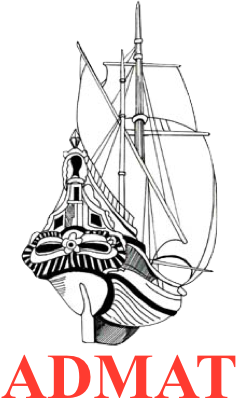ADMAT
The Tile Wreck Maritime Archaeological Project
Monte Cristi, Dominican Republic, Caribbean
Photographs From The 2013-2014 Field Season
May 2013
The May 2013 Team who surveyed The Tile Wreck
With any wreck site there are areas of confusion, areas where important clues to the answers of the research questions are missing. Whilst a lot of information has been collected from this wreck site, the name of the ship still eludes us. In addition we have the central section of the wreck but have not found the bow or stern sections.
The anchors all three of them, were located at one end of the wrecks timbers and in an area we believe was the bosun's store, in other words they were in the ships hold rather than deployed. The fourth or largest anchor, called the "best bower" may well be the one which Dr. Spooner and Rami found on the seaward reef, prior to it being looted in 1999. This was seaward of the wreck in alignment with the longitudional axis of the wreck. This supports the theory that the ship was trying to ride out a storm and entered into the bay for protection. Whilst at anchor the anchor parted and the ship was blown backwards, loosing her rudder in the shallows before managing to claw her way forwards head to wind and basically grounding and sinking at the same time together with a fierce fire on board.
For this theory to be proven we need to confirm the location of the bow and stern. Logically the bow must be to the seaward side if the rudder is at the other end. The anchors together with the lashing bars for stowage in the hold, rope, barrels, staves etc we believe were in the hold, which on the wreck site was between the anchors and the rudder.
Another theory is that the anchors mark the position of the bow and the rope staves are just there as part of the wrecking process and the rudder was washed past the wreck. To prove this one of the bow or stern must be proven.
At the end of the remaining timbers next to the anchors there are three pieces of timber which join onto a horizontal timber which has keel bolts. The timber was thought to be the keel and therefore the question as to the three pieces of timber was important. Was it there as a result of the wrecking process and came from another part of the ship? Was it the lower bow construction or was it part of the stern section?
The purpose of the May survey was to answer these questions if possible.

